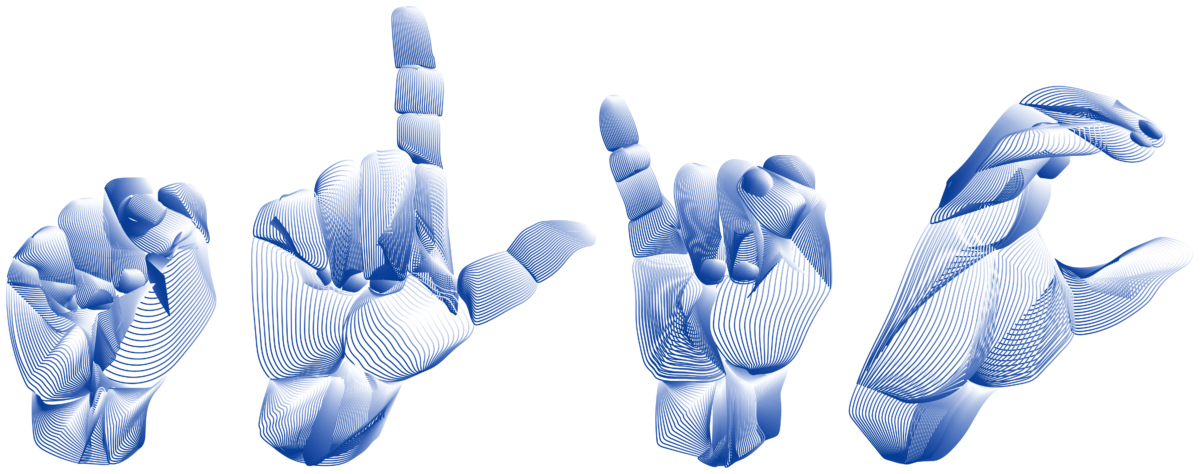This course emphasizes learning through practice; building on what students know; and introducing them to new ideas, relationships, materials, and processes for cultural, historical and artistic thinking. Student learning will include the refined application of the De’VIA elements and principles of design, incorporating the creative and design processes. Students will also learn about the connections between works of De’VIA art and their social, cultural and historical contexts.
Note: De’VIA, (Deaf View Image Art) explores Deaf experience on a personal cultural or physical level using formal art elements. Many artworks instinctively or intentionally reflect De’VIA elements such as:
• Intense and contrasting colours
• contrasting textures and values
• emphasis on eyes, mouths, ears and hands
• motifs, metaphors, insights and perspectives of Deaf experience
This presents an opportunity for students to reflect on, explore and integrate their experiences as Deaf individuals and to express their experiences through art.
Reference: For a list of links, please click on “Visual Arts Resources”.
Overall Expectations
By the end of this course, students will:
• demonstrate an understanding of the De’VIA art history timeline;
• differentiate De’VIA historical artworks by content, theme, style, techniques, and materials;
• explain the social and historical context of the Deaf community and the chronology of distinctive artistic styles;
• produce a De’VIA work designed around a specific experience as a Deaf person (using the De’VIA elements – texture, colour, composition issues, subject matter, and use of visual language);
• demonstrate an understanding of the De’VIA design process;
• identify De’VIA characteristics and its relationship with the sensory, formal, expressive, and technical qualities found in their own works and works studied;
• apply critical analysis processes to their artwork and works studied (using their knowledge and understanding of the cultural and historical influence of De’VIA artwork);
• describe the interrelationships among art, the consumer, and the community (how does De’VIA artwork influence Deaf consumers’ feelings & perspectives, or hearing consumers’ feelings & perspectives in relation to the Deaf community etc.)
Specific Expectations
By the end of this course, students will:
• demonstrate an understanding of the De’VIA art history timeline;
• describe the characteristics of a historical stylistic movement in the artworks of Deaf artists (e.g., Helen McNicoll [Impressionist], Samuel Ash [Native Art], Hubert Greene [Group of Seven], Dawn Moncrieffe [UK’s Mod culture], or the influence of one artist’s style on the artwork of a Deaf artist (eg. Igor Kolombatovic [sculptor, Ivan Mestrovic] Vanessa Vaughan [painter, Gustav Klimt]);
• produce a survey of a particular Deaf artist’s evolving artwork through a period of time, noting stylistic changes (e.g., colour, texture, focus point, etc) (Samuel Ash’s work from 1970’s to 2005);
• describe how Deaf culture shapes its art with reference to other artwork with references to their cultures (e.g., “Deaf Identity Crayons: Then and Now” by Ann Silver, “The Last Supper” by Ethan Sinnott);
• describe and demonstrate an understanding of the steps of the design process (i.e., specifications, research, experimentation, preliminary sketches, prototypes, revision, presentation, reflection) (Dawn Moncrieffe’s carpet design development and her art journal);
• explain how their personal artworks have been influenced by works they have viewed at the Deaf Culture Centre;
• use research from the Deaf Culture Centre’s resources (e.g., art history books, videotapes, gallery exhibits and photographs, and conversation with visiting Deaf artists) as part of the creative process;
• explain how they have incorporated into their studio assignments characteristic materials and expressive qualities of De’VIA and Deaf artists’ works studied;
• analyse the formal composition of a De’VIA artwork collection and identify the De’VIA elements and compositions;
• explain the significant expressive qualities of a De’VIA art work with reference to possible social, cultural and historical influences;
• identify possible meanings of a Deaf artist’s work by referring to his/her background information and specific visual indicators;
• explain how a culture shapes its art with reference to historical and contemporary examples (eg. historic reference to Betty Miller, the Deaf President Now Movement, Deaf Way Conference and the De’VIA Manifesto, and contemporary artwork examples by Tony McGregor, Uzi Buzgalo and Pamela Witcher).


